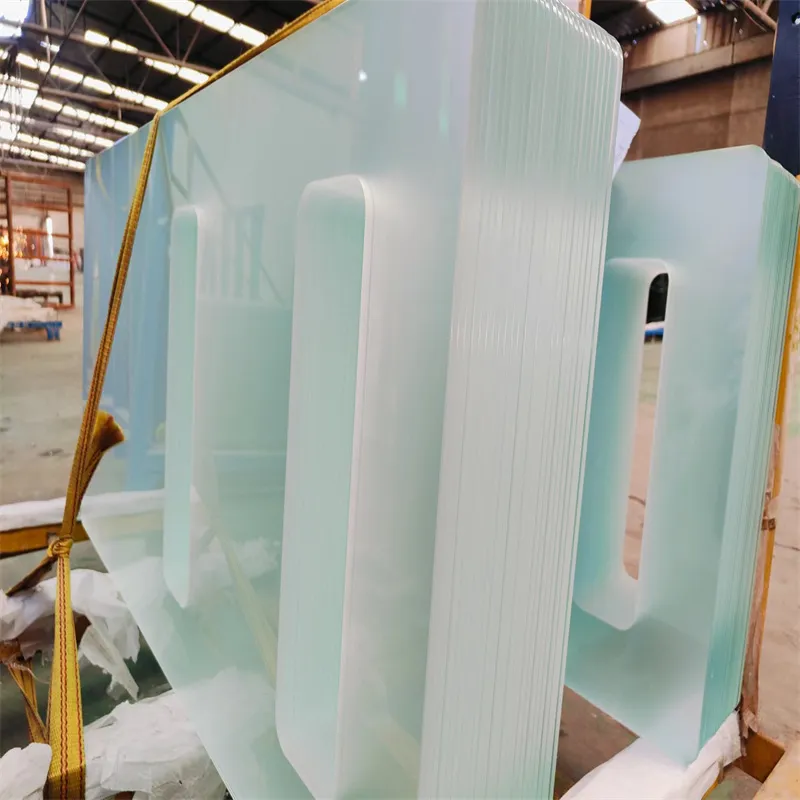Dec . 20, 2024 10:13 Back to list
Exploring the Current Market Trends for Wired Glass Pricing and Availability
The Intricacies of Wired Glass Pricing Understanding the Factors at Play
Wired glass, a unique type of glass reinforced with a network of wires embedded within it, has been a staple in both residential and commercial architecture. Its versatility, durability, and safety features have made it a popular choice in various applications, ranging from doors to windows and even partitions. However, the pricing of wired glass is a topic that warrants closer examination, as it is influenced by a multitude of factors that can vary significantly across different markets and applications.
The Basics of Wired Glass
Wired glass is essentially ordinary glass that has had metal wires integrated into its structure during the manufacturing process. This reinforcement provides several advantages, including improved safety during a break, as the wires hold the glass pieces together and reduce the risk of injury. Additionally, wired glass is often used in fire-rated applications where it can contain flames and prevent the spread of smoke, adding a layer of safety in commercial buildings.
Key Factors Affecting Wired Glass Pricing
1. Material Costs At the core of any pricing strategy are the raw materials. The base materials for wired glass include silica sand, soda ash, and limestone, which are common in glass production. Additionally, the cost of the wires used can vary based on the type of metal and its market availability. Fluctuations in the prices of these raw materials directly impact the final pricing of wired glass products.
2. Manufacturing Processes The production of wired glass is more complex than that of standard glass. The process involves setting the metal wires in place before the glass is formed and annealed. This extra step in the manufacturing process adds labor and equipment costs that are passed on to consumers. Advanced technologies that improve the efficiency of glass production can also influence pricing, leading to variations between manufacturers.
wired glass price

3. Thickness and Customization Wired glass is available in various thicknesses and can be customized for specific projects. Thicker glass not only requires more raw material but also demands more energy during production. Custom sizes introduce additional costs associated with tooling and labor. As such, clients looking for tailored solutions may find themselves paying a premium compared to standard sizes.
4. Safety Regulations and Certifications Wired glass often needs to comply with various safety standards and regulations, especially when used in buildings requiring fire-rated materials. Obtaining necessary certifications can be a costly endeavor for manufacturers. As a result, these costs are typically reflected in the pricing of wired glass products, especially in regions with stringent building codes.
5. Market Demand and Competition Supply and demand dynamics in the construction and renovation markets also play a crucial role in wired glass pricing. Economic conditions, like inflation or shifts in the housing market, can lead to increased demand for wired glass products, driving prices higher. Conversely, a saturated market with multiple suppliers can create competition that may lower prices, benefiting consumers.
6. Geographic Variables Pricing for wired glass can differ significantly based on geographic location. In urban areas where construction is booming, demand may outpace that in rural regions, resulting in higher prices. Additionally, shipping costs and logistics also contribute to price variability, especially for bulk orders or distant deliveries.
Conclusion
Wired glass serves an important function in the construction and design industries, primarily as a safety feature. As with many construction materials, understanding its pricing involves a comprehensive look at multiple interconnected factors, including raw material costs, manufacturing intricacies, market competition, and geographic influences.
As we move toward a future where safety and sustainability are prioritized in building design, understanding the nuances of wired glass pricing will become increasingly important for architects, builders, and consumers alike. Armed with this knowledge, stakeholders can make informed decisions, ensuring that they choose the right products for their unique applications while staying within their budget constraints. Ultimately, the value that wired glass brings to projects often justifies its price, particularly where safety and compliance are paramount.
-
Safety and Style with Premium Laminated Glass Solutions
NewsJun.24,2025
-
Reinvents Security with Premium Wired Glass
NewsJun.24,2025
-
Premium Float Glass Line for Modern Architecture
NewsJun.24,2025
-
Low Emissivity Glass for Energy-Efficient Architecture
NewsJun.24,2025
-
High-Performance Insulated Glass Solutions for Modern Architecture
NewsJun.24,2025
-
Elevates Interior Style with Premium Silver Mirror
NewsJun.24,2025
Related PRODUCTS














